Like jet diamonds from the earth, black truffles have epitomized luxury for thousands of years. Confusingly, four very different species: (Tuber melanosporum, and Tuber brumale) are both known as winter black truffles. Today we'll take a deep dive into the fascinating, intimidating and delicious world of truffles. At the end, you'll understand the varieties like an expert-an important thing to know as the prices and flavors can vary drastically.
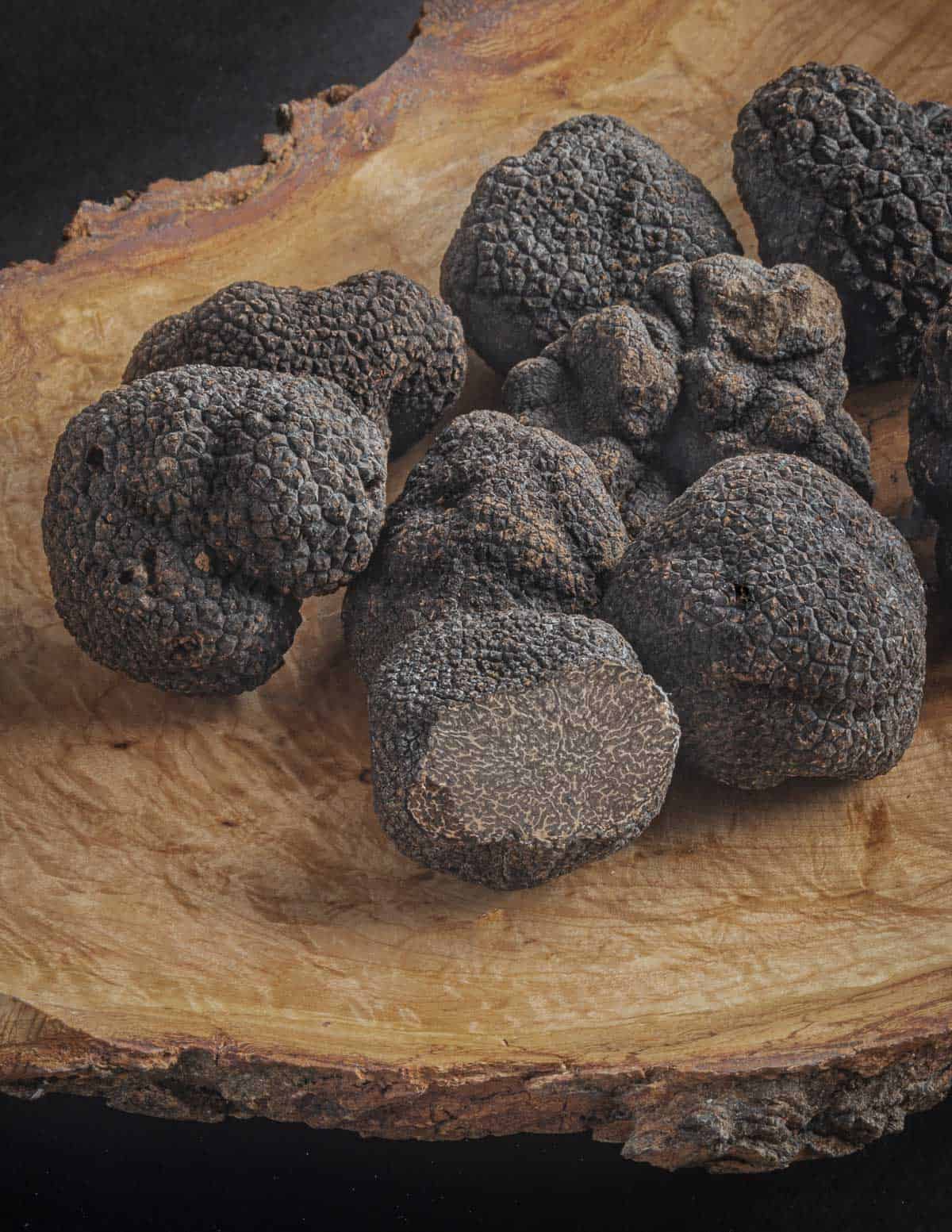
For the purposes of this post, I'm also only referring to winter black truffles as those that ripen in the late fall into winter. While they both have a black outer skin and are delicious in their own right, summer and autumn truffles (T. aestivum / T. uncinatum) will be covered in the future.
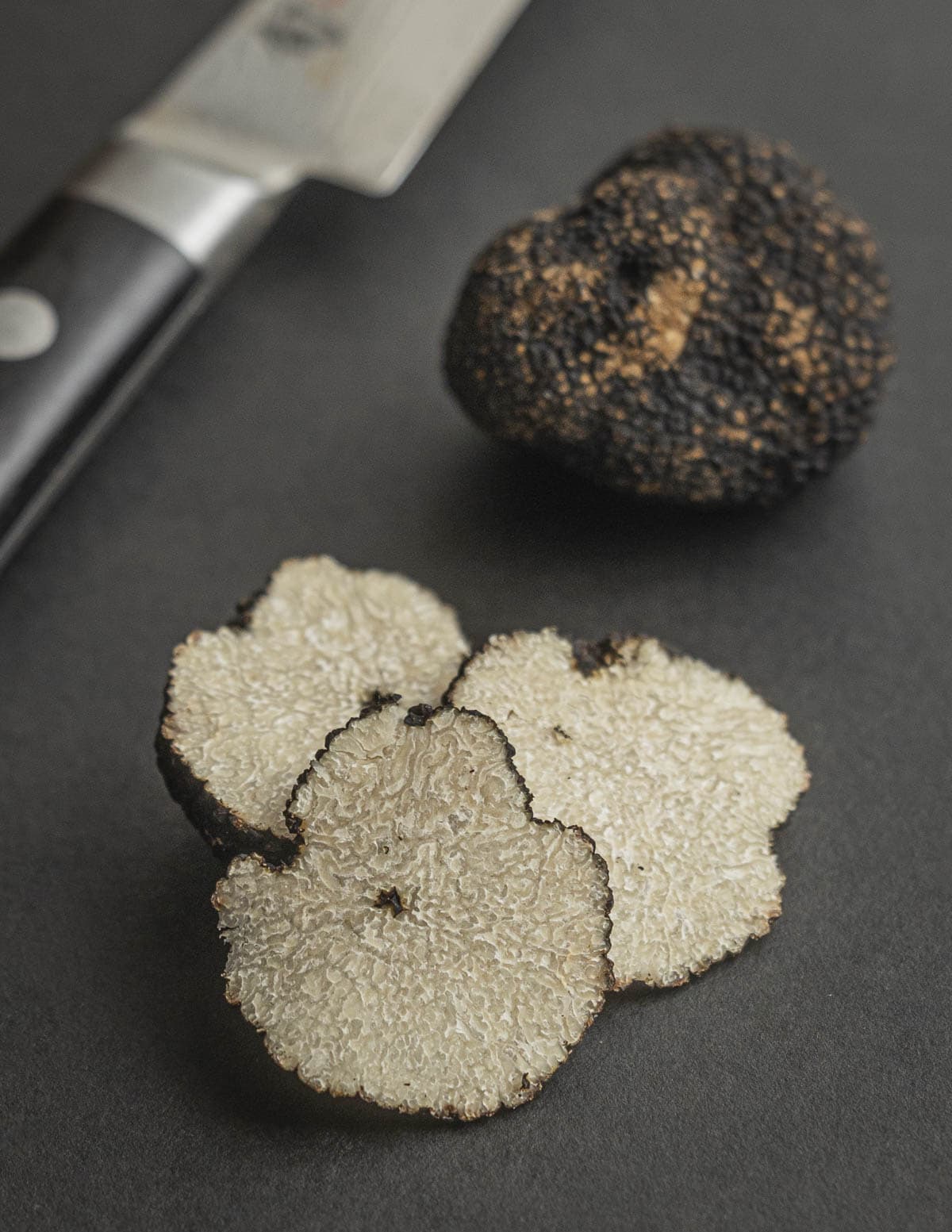
All species in this post were described by Carlo Vittadini, an 18th century Italian mycologist from Milan, so you may also see them written with the word vittadini or vitt added to the end Latin name.
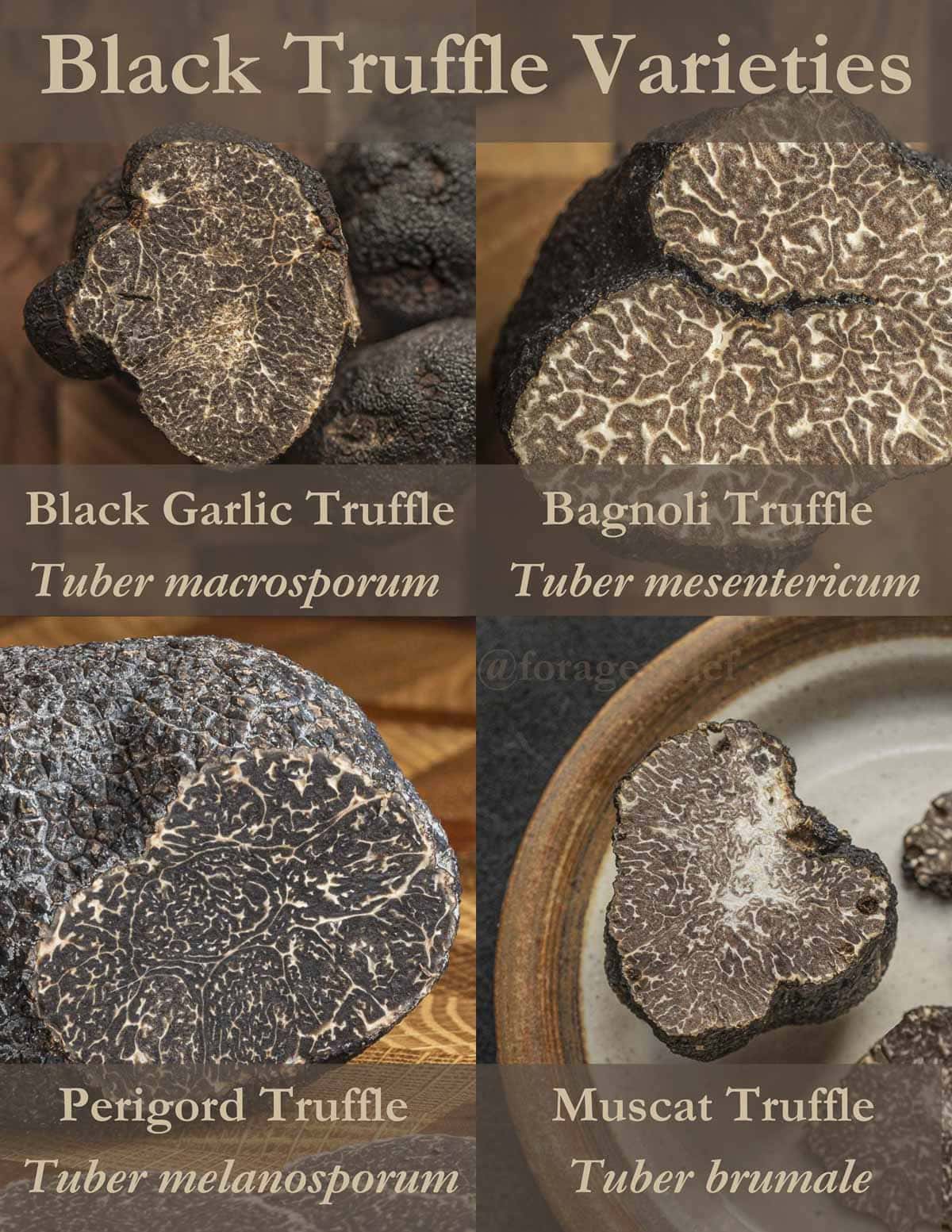
Black Truffle Varieties
Just as with other mushrooms, common names can be imprecise so the best way to get to know them is by using Latin names. I'm going to describe four different varieties that can be harvested and sold in the winter in Europe: each one with unique flavors, characteristics, and price points.
The Black Perigord Truffle (T. melanosporum)
Also known as the French black truffle, truffe noire, tartufo nero de norcia, and trufa negra. All of the names are confusing, but they're the same variety: Tuber melanosporum. These are the most prized, and the most expensive variety of black truffle.

The aroma is complex: an intense mixture of truffle, mushroom, and a tiny bit of smoky, peaty musk. They're often described as being sweet.
At a glance they may look similar to the other species in this post. But, if you look closely you'll notice the inner gleba (spore-bearing material) is deep black with a purplish-red hue and numerous fine, white veins.
Although they're most well known from Europe they're now cultivated in the Pacific Northwest, Chile and Australia. I've heard the incubation time for them to bond with the roots of host trees can take up to 30 years.
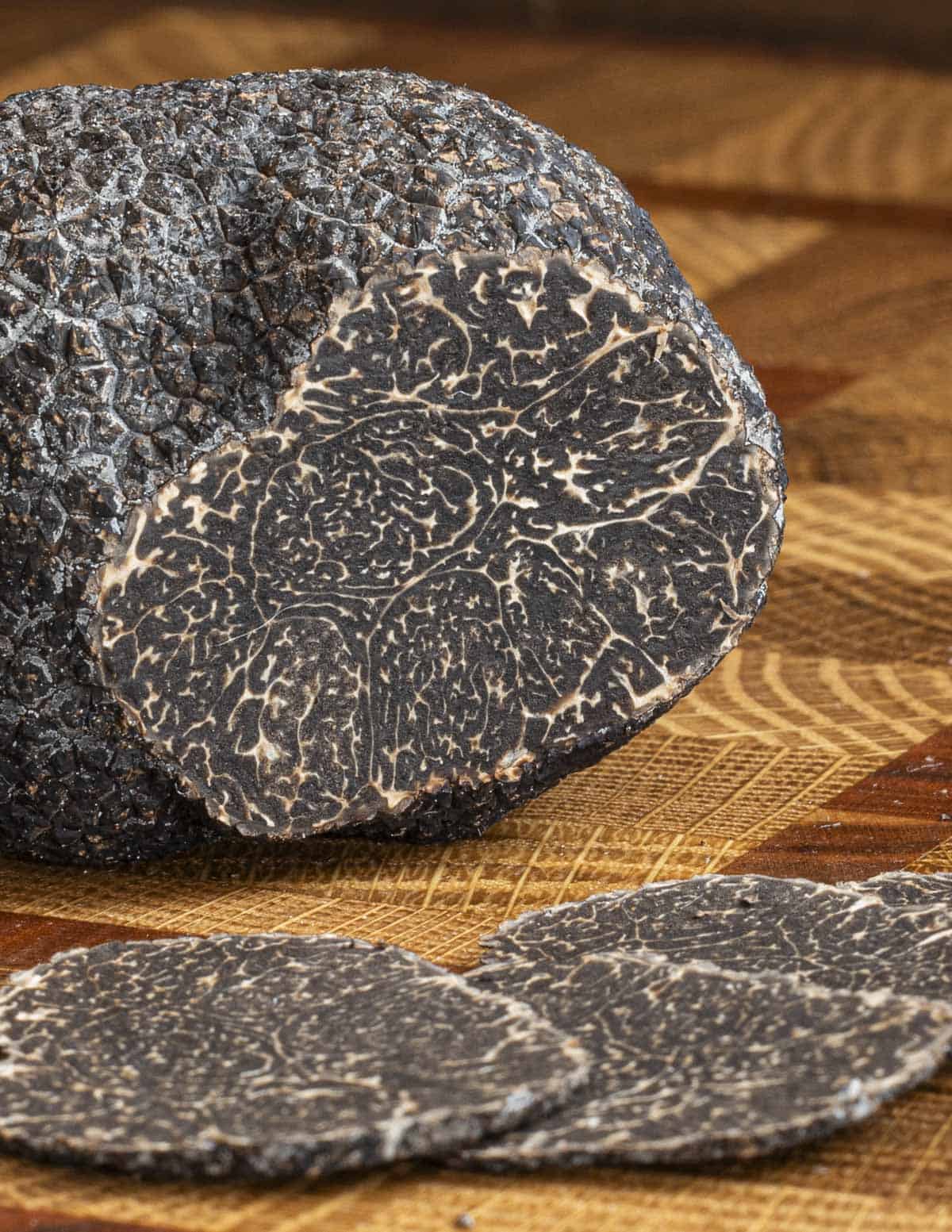
Prices vary wildy from place to place depending on the grade and source, but melanosporum truffles will cost around $35 to $75 an ounce, or roughly $560-1200 per pound. If that sounds crazy, keep in mind a serving of fresh truffles is about 5-10 grams. If your friends pitch in, two ounces of fresh truffle can serve 5-10 people.
Muscat Truffle (T. brumale)
A cheaper black truffle substitute, these are seen as a weedy infiltrator of T. melanosporum habitats although the reality seems more complex. That said, I love them for the lower price, and I think the strong aroma makes them a good introductory species for newcomers.
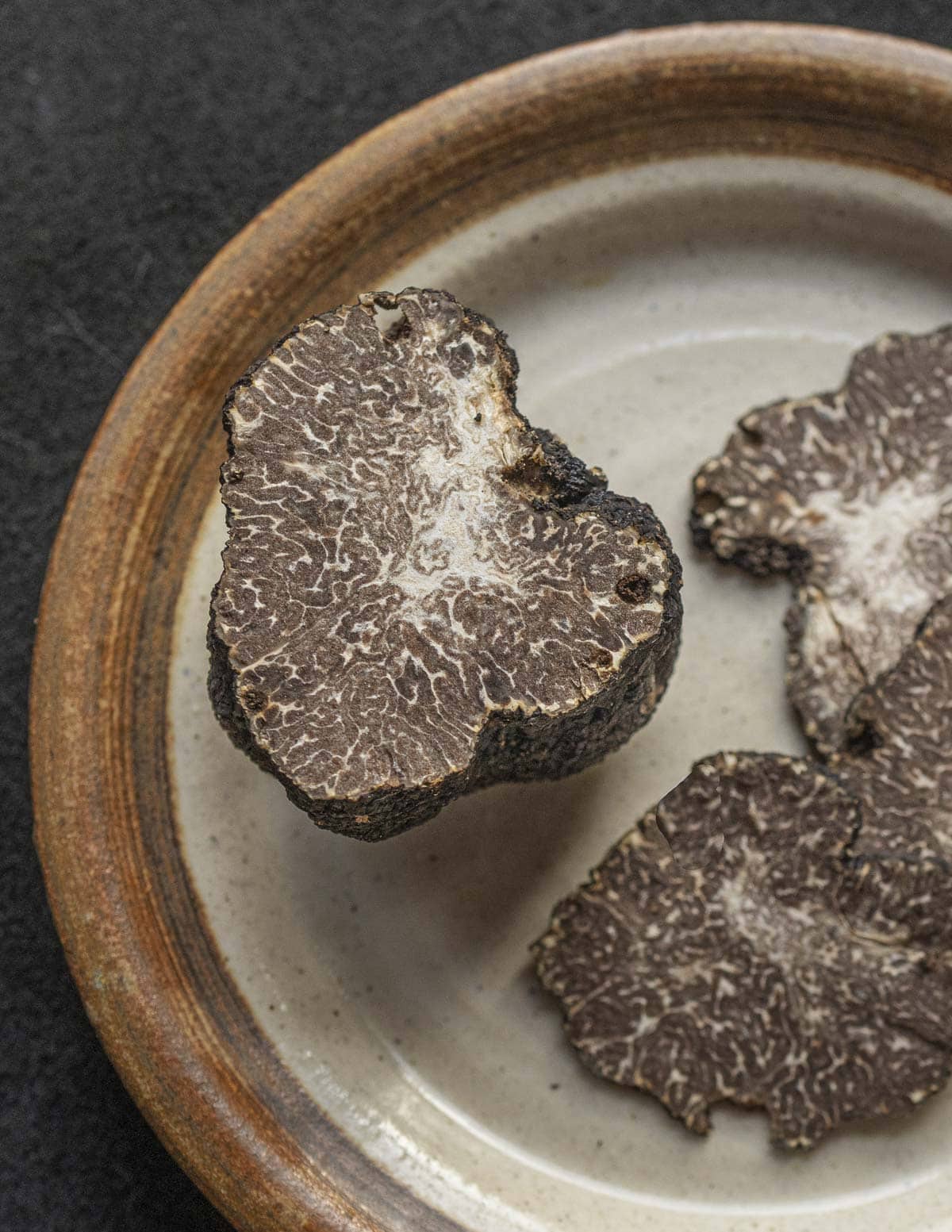
While they look similar to T. melanosporum at a glace, the gleba has thicker veins that are more widely spaced and the bumps on the outer black peridium are smaller.
The difference in smell is immediately noticeable: a powerful, almost smoky aroma that reminds me of peaty scotch, with only a hint of truffle in the background.
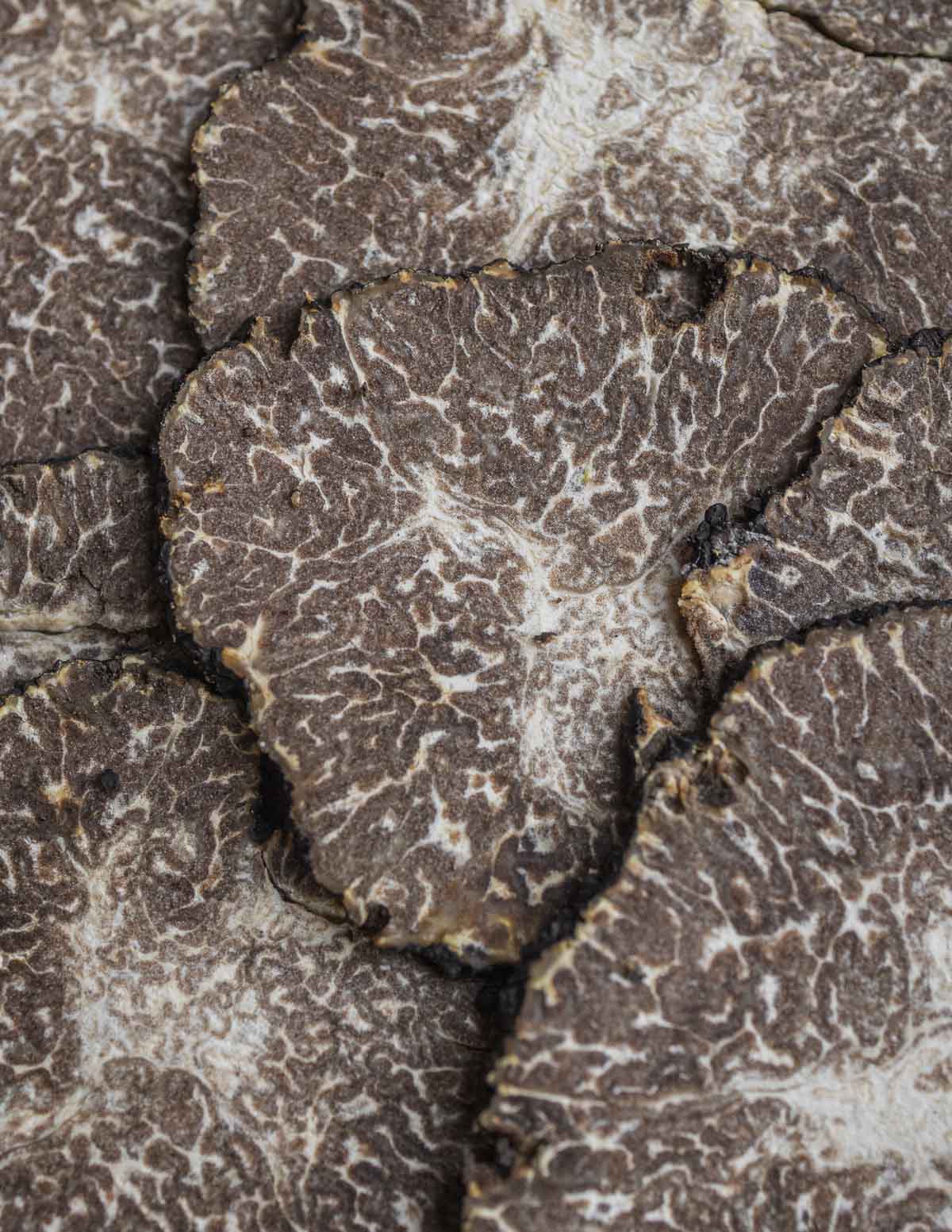
The peaty, musky aroma of T. brumale is also present in T. melanosporum, just to a lesser degree and it's overshadowed by the sweeter, more recognizable "true" truffle aroma most people will be familiar with.
One of the cheapest species, T. brumale will range in price from $60 or B grade to $90 for A grade (3.5oz).
Bagnoli Truffle (T. mesentericum)
A relatively obscure species, the Bagnoli truffle has a sharp aroma I've heard compared to kerosine or phenol. Once exposed to air it transforms into a very pleasant aroma that's a mix of mushroom with notes of truffle.
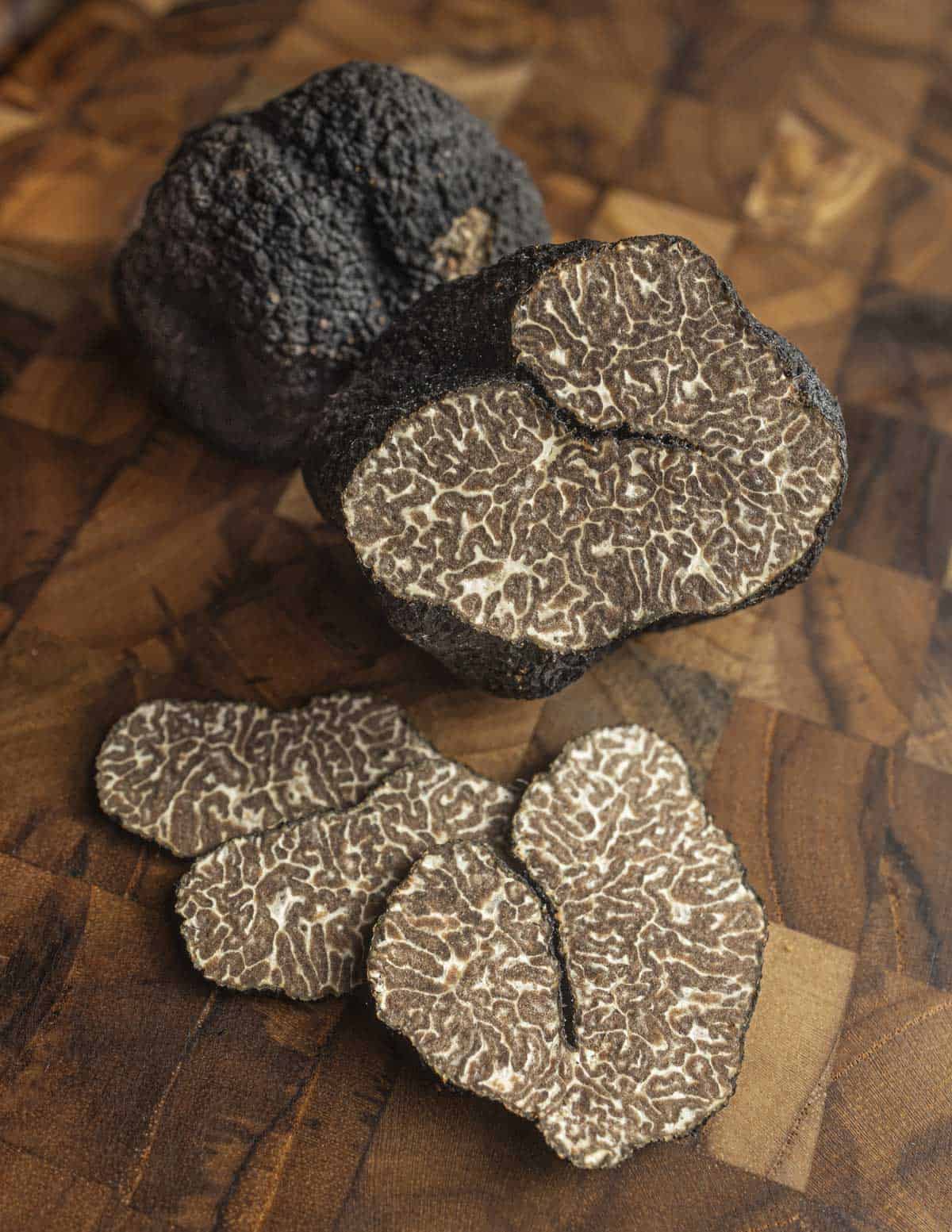
To me, their flavor is most similar to summer truffles. Both species have a more mushroom-forward scent with notes of truffle in the background and a lack of any musky, peaty quality T. melanosporum and T. brumale have.
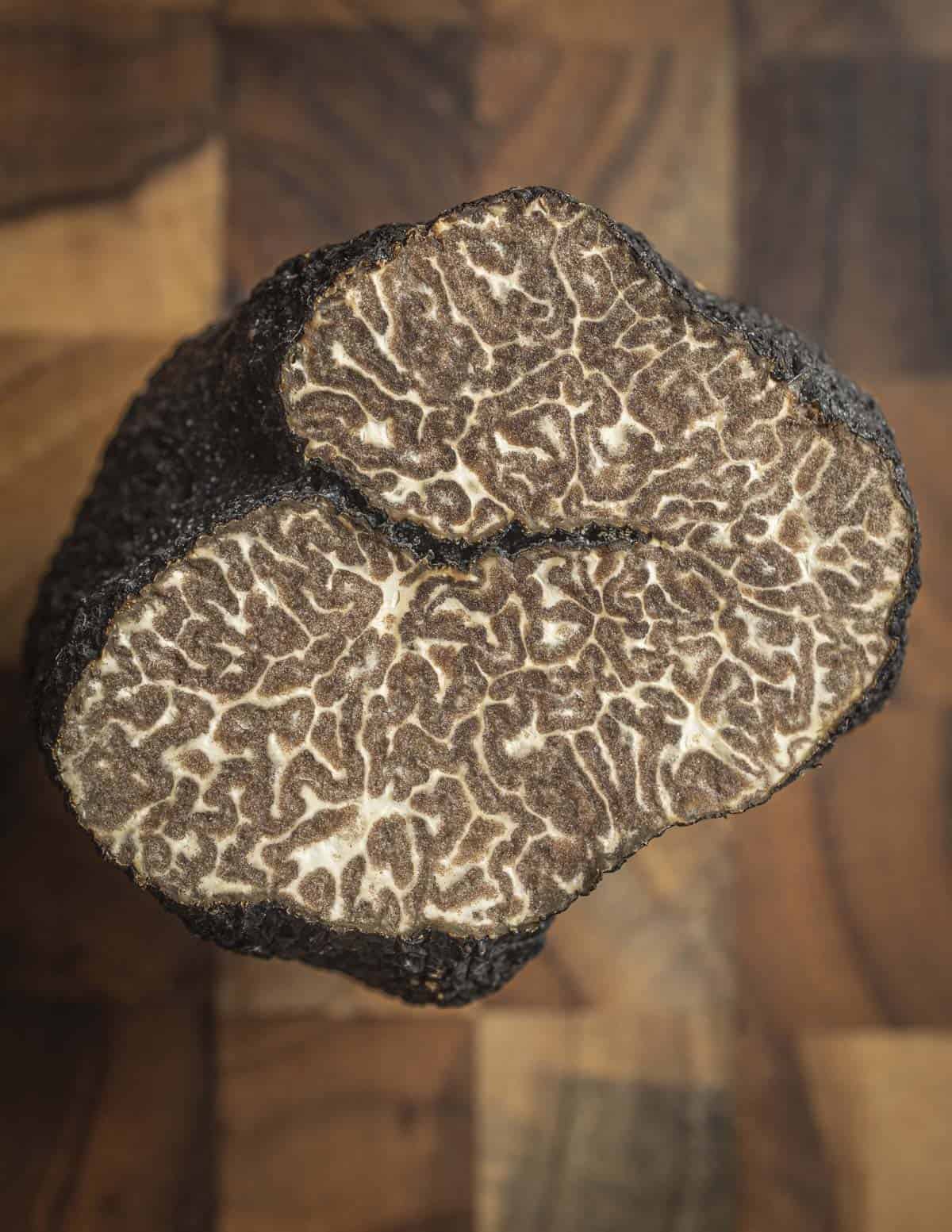
Interestingly, these are the cheapest varieties in this post at a cost of about $80 for A grade, and $45 for B grade (3.5oz).
Smooth Black Garlic Truffle (T. macrosporum)
Probably the most obscure species in this post, the smooth black truffle has a nearly smooth peridium and a distinct aroma of garlic or alliums.
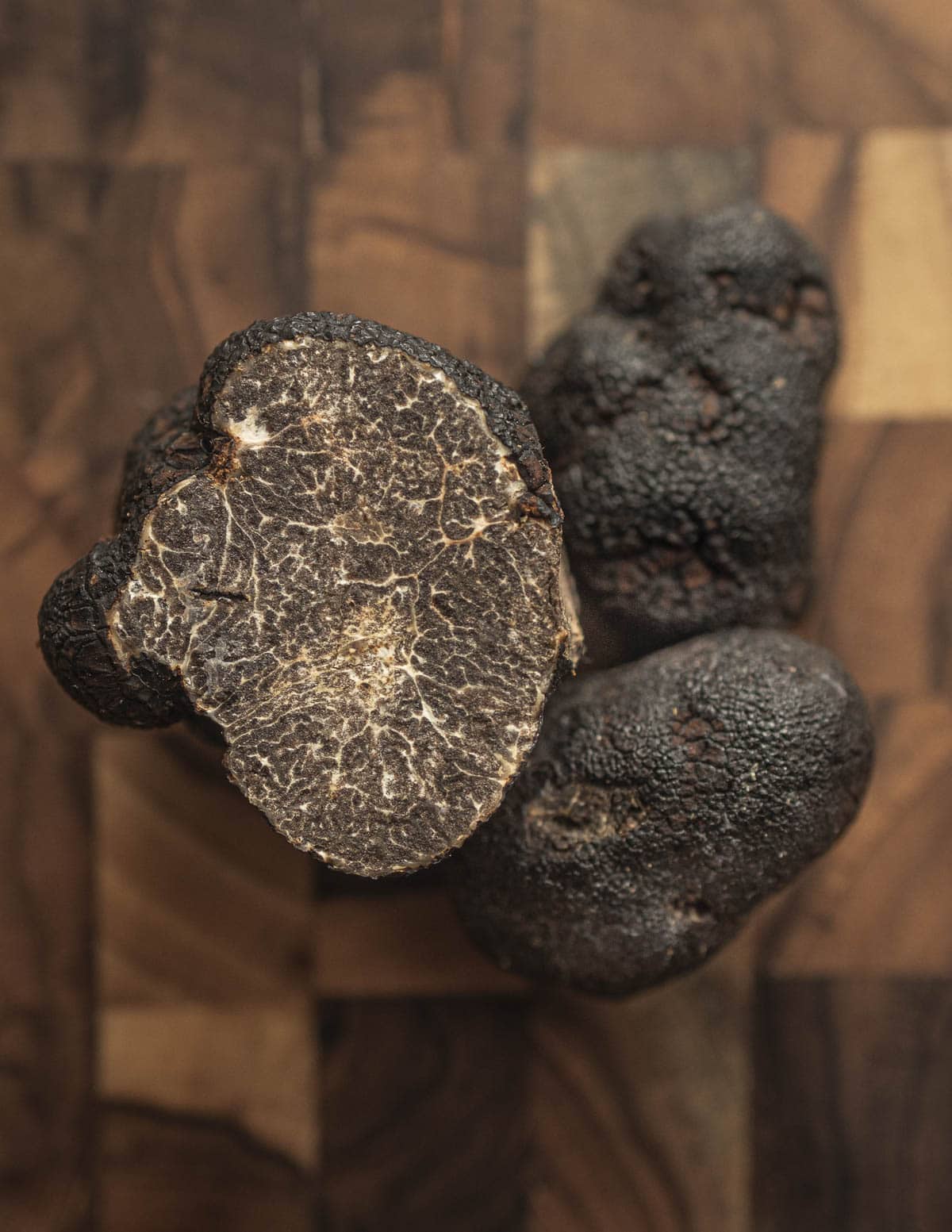
The collections I've eaten have been noticeably more brittle than others species, with the occasional discolored spot or insect damage. They're still delicious, unique, and the only truffle I've tasted with a strong allium aroma reminiscent of Alba white truffles (T. magnatum pico). That said, the aroma isn't even remotely close to the potency of Alba truffles.
Like T. brumale, it's seen as inferior to T. melanosporum and is much cheaper. The price of T. macrosporum comes in around $100 for A grade and $80 for B grade (3.5oz).
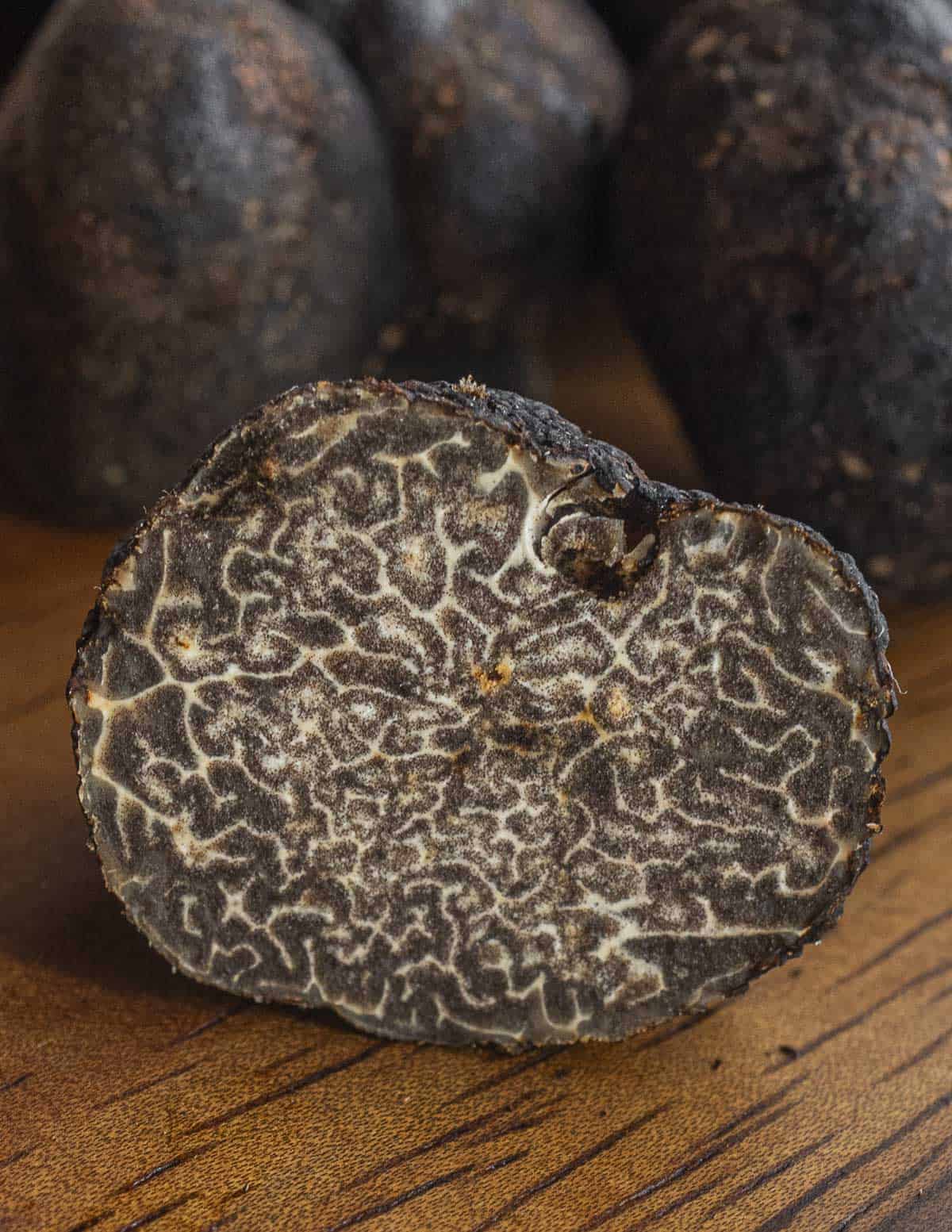
Where to Buy Black Truffles
I've purchased truffles from many different places over the years. If I've learned anything, it's that having a supplier you can trust is very important. Out of all the suppliers I've worked with, trufflecart.com is one of the best and I've ordered from them at least five times in the last six months. They also sell to the general public, and best of all: they have the best prices around.
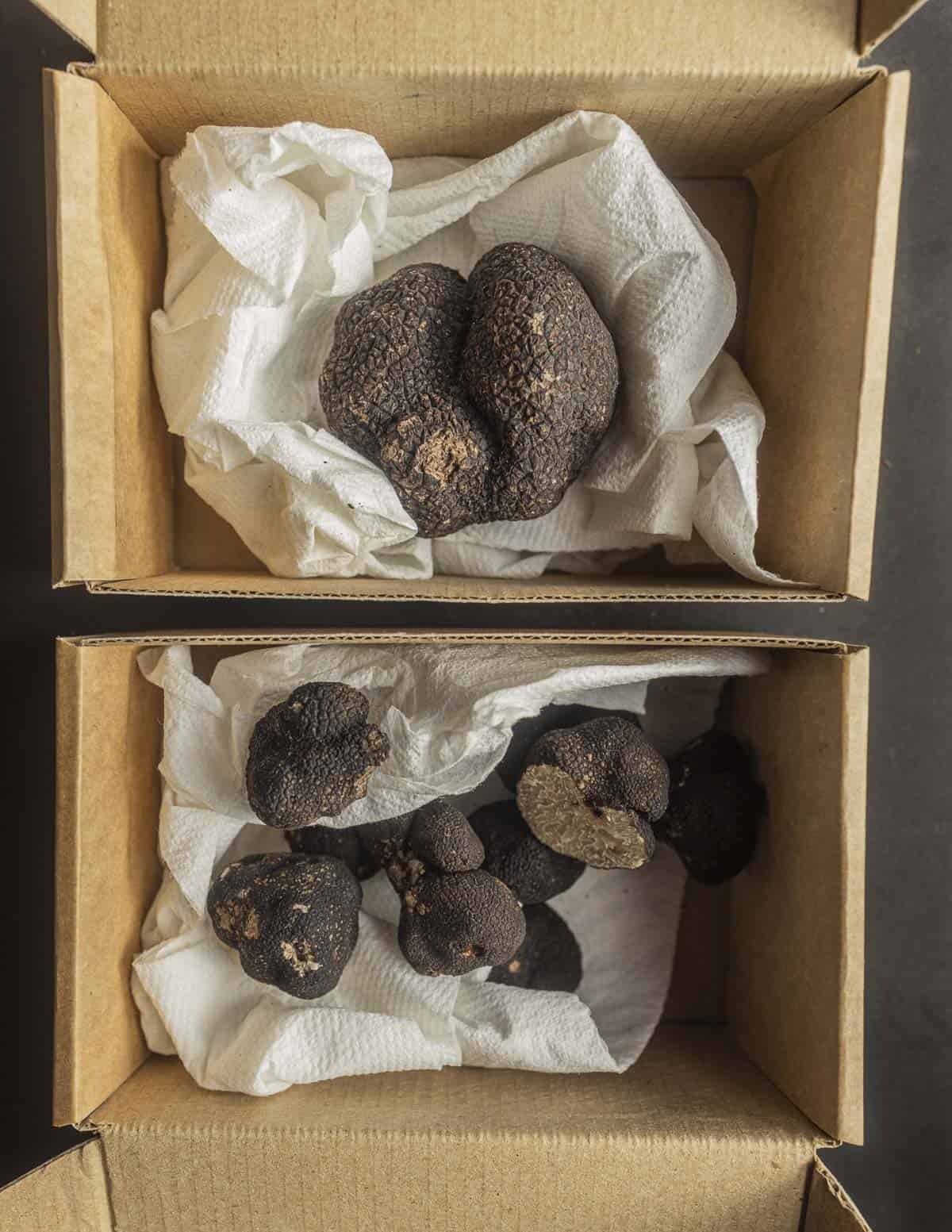
Trufflecart sells every species mentioned in this post in all the different grades, although some you may have to search for (T. mesentericum & T. macrosporum).
I feel so strongly about spreading the word that I reached out to them this week to ask if they'd be willing to give a discount to my readers. They were very generous. From now until February 25th, if you use the promo / coupon code "Bergo" they'll give you 25% percent off ANYTHING they sell. If you needed an idea for a fun Valentines meal, here you go. I'll also add that I'm not being compensated at all here, I just want to spread the word.
Understanding Black Truffle Prices and Grades
Just like manoomin / wild rice, truffle pricing is under-standardized and can vary a lot depending on the seller. Here's what you need to know.
Truffles come in three different grades: Extra grade, A, and B. A and extra grade are the largest, most expensive, and have the strongest aroma.
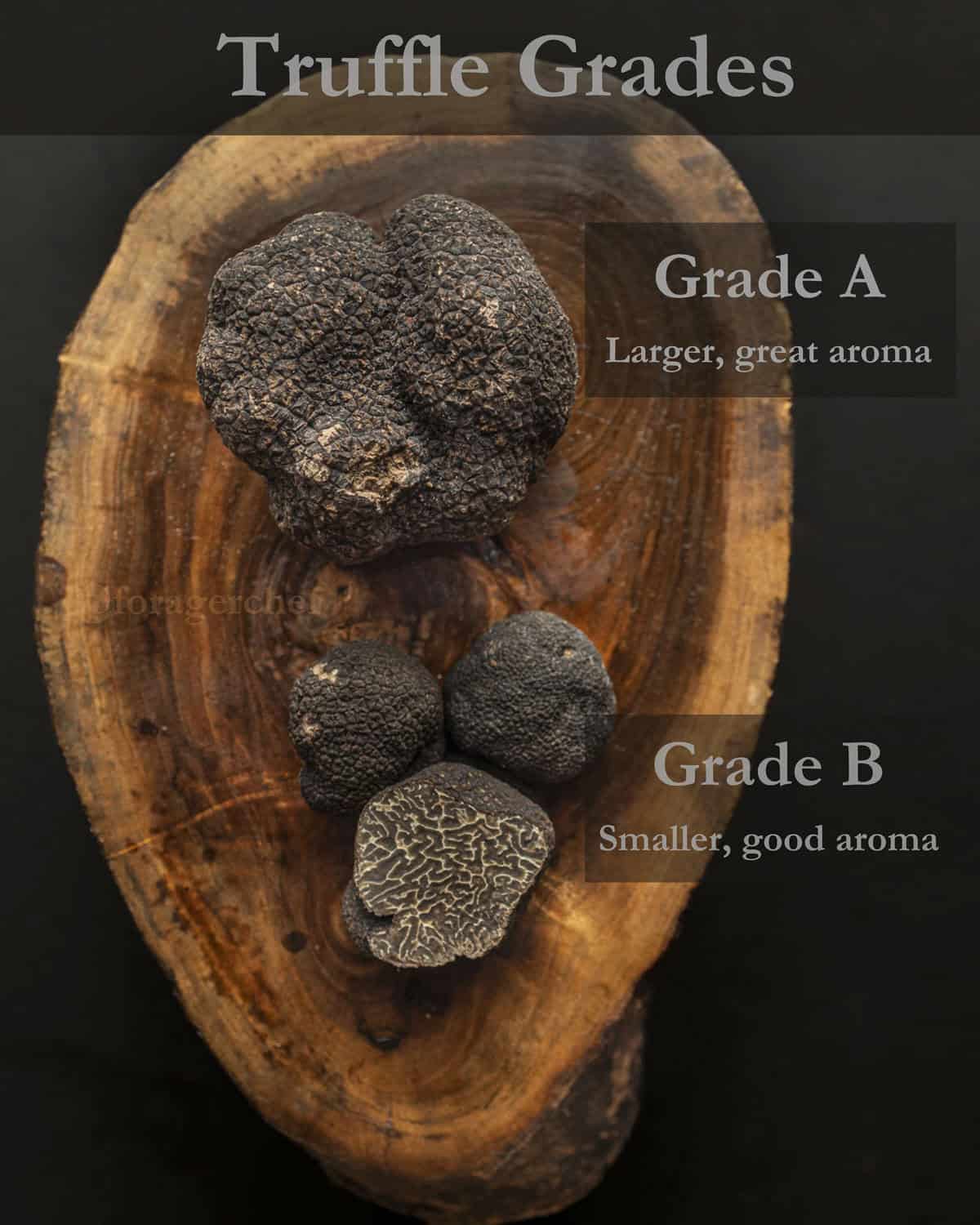
B grade are cheaper, smaller, may have damage from insects and an aroma that's still very good, but not quite A grade. I've also noticed occasional variation in the color of the gleba with some grade B I've purchased, which didn't have as strong of an aroma. Considering the the price, defects like that are negligeable in my mind.
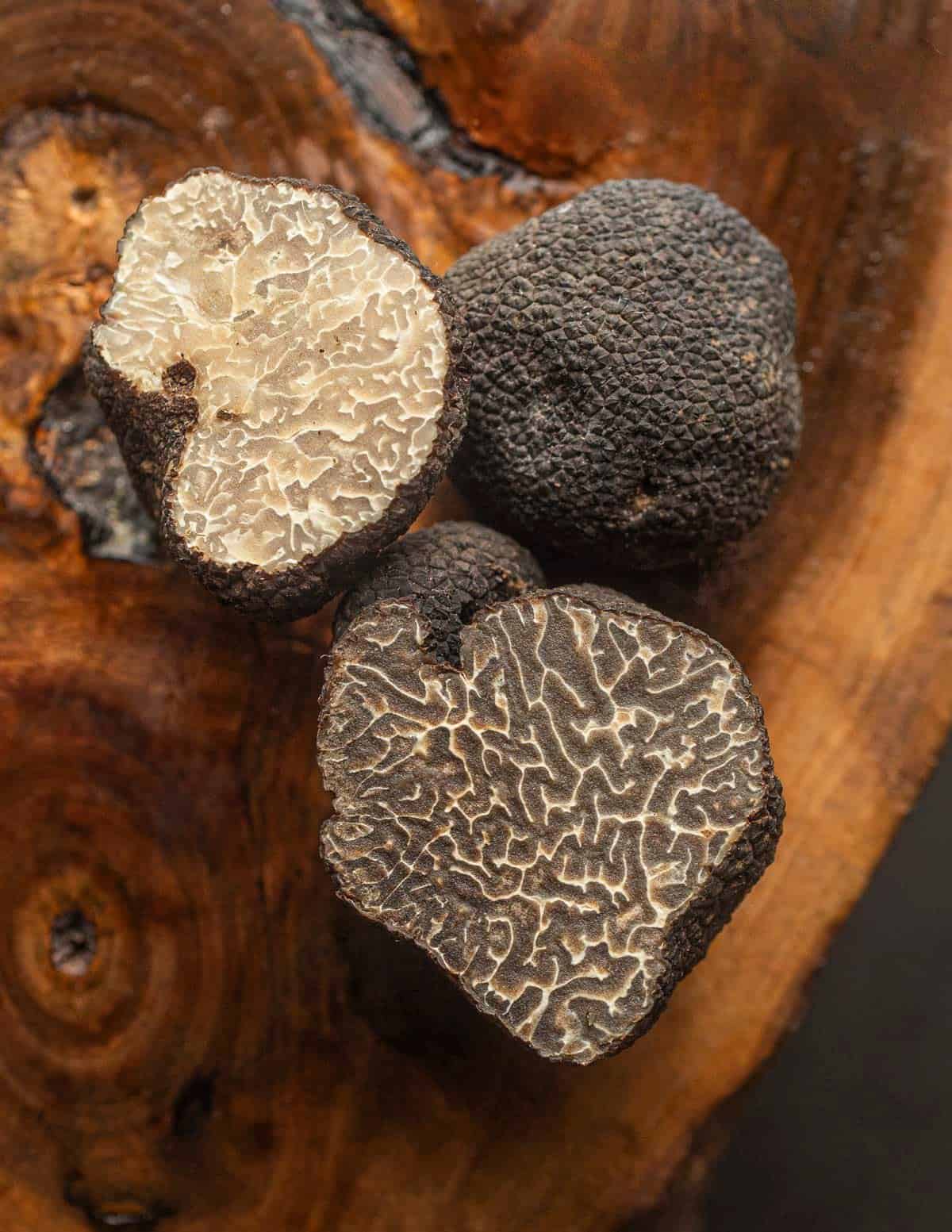
Truffles suppliers also sell by-products like finely cut pieces or pre-cut slices. They can be ok for making butter or oil. For your first time it's best to get B grade or splurge on A grade or extra grade.
Cooking with Black Truffles
There's two rules for cooking with truffles I live by. The first is that they should be shaved raw over food or at most gently warmed, (think tossing with hot pasta in a bowl). The exceptions (at least for me) are when they've been allowed to infuse into foods that can be cooked, like when they're stuffed under the skin of a chicken 24 hours before roasting in the French pPoulet aux Demi-Deuil or when they're stored with eggs.
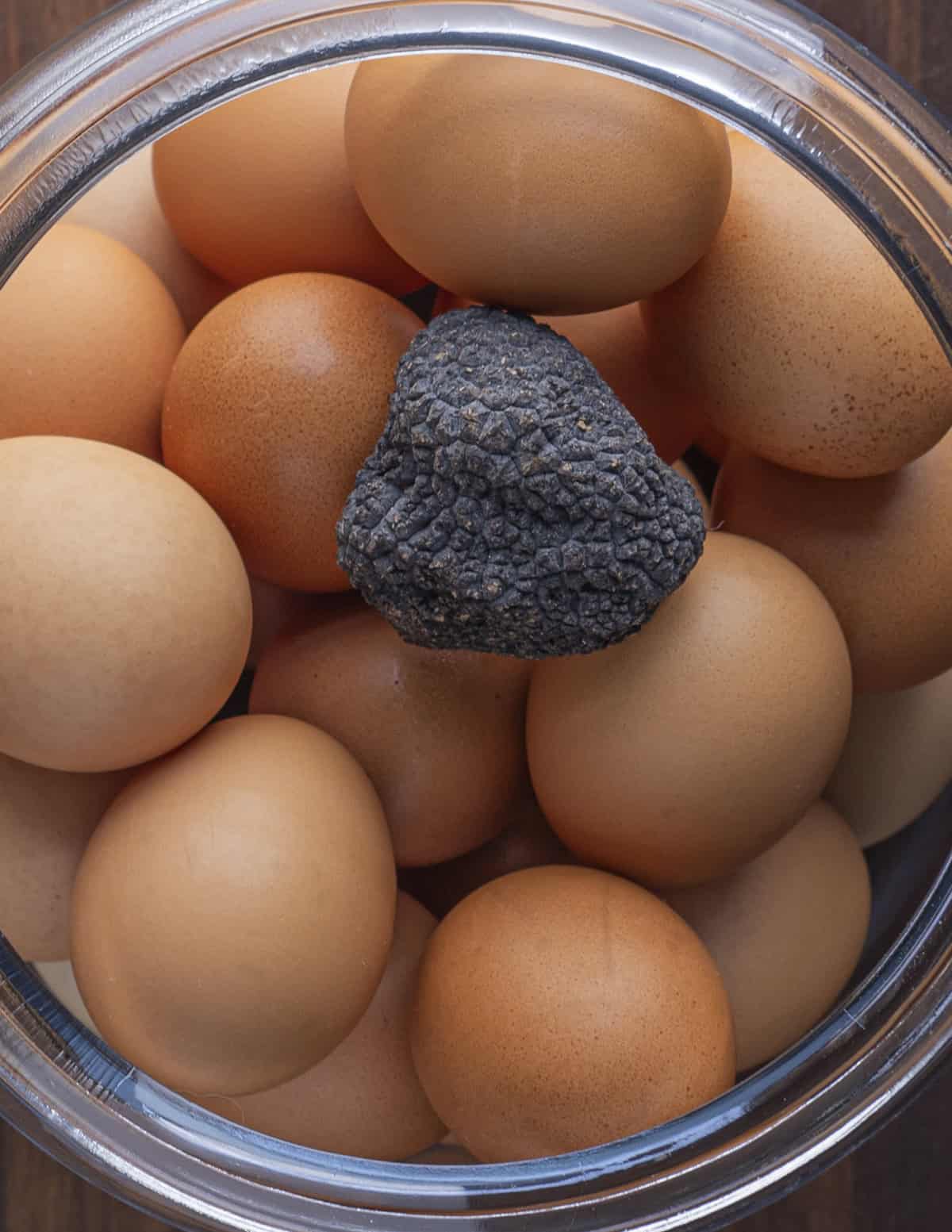
The other thing is to keep the other ingredients at a minimum. Scrambled eggs or a truffle omelet can be incredible, but add broccoli or peppers to the same dish and it can ruin it, obscuring the flavor completely.

Here's a few examples of ways I like to use them. You'll notice that every recipe has only a few ingredients.
Simple Pasta
In my mind this is one of the first recipes anyone should make. Cook some noodles, toss them with butter and parmesan, then shave fresh truffles over the top and eat.
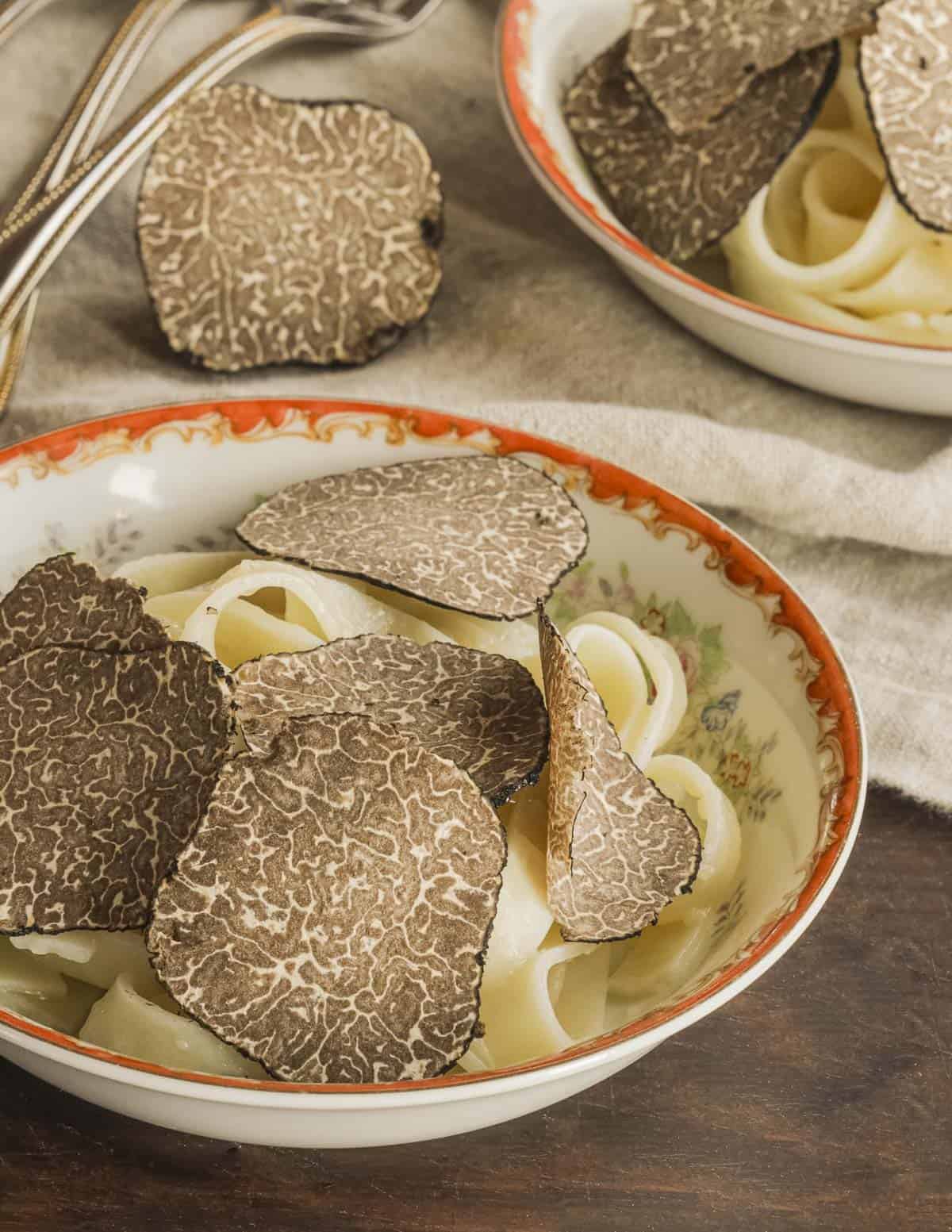
Toast
Toast a good piece of bread, rub with a garlic clove and garnish with as many shaved truffles as you can. I like to make this with burrata cheese or a soft spread of cooked leeks.
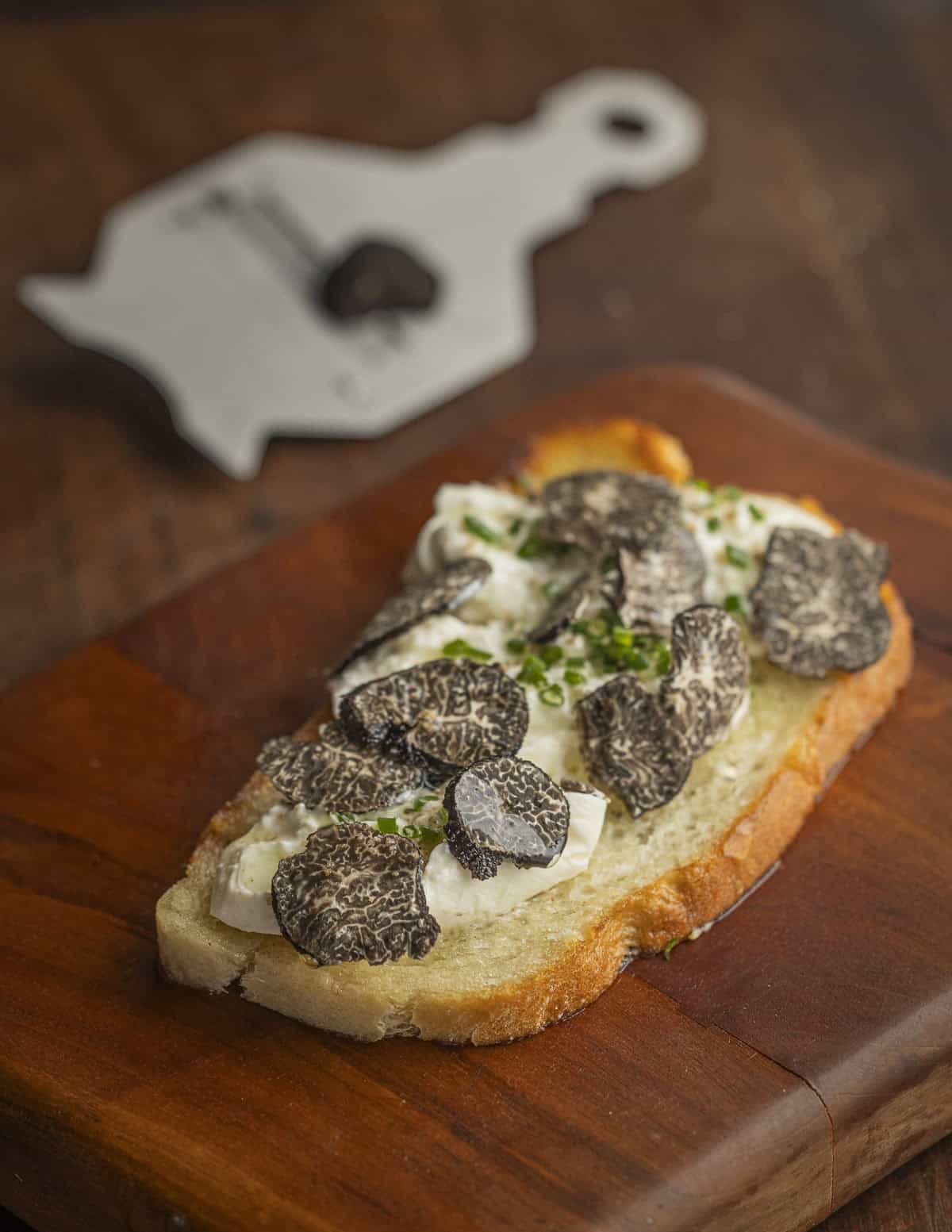
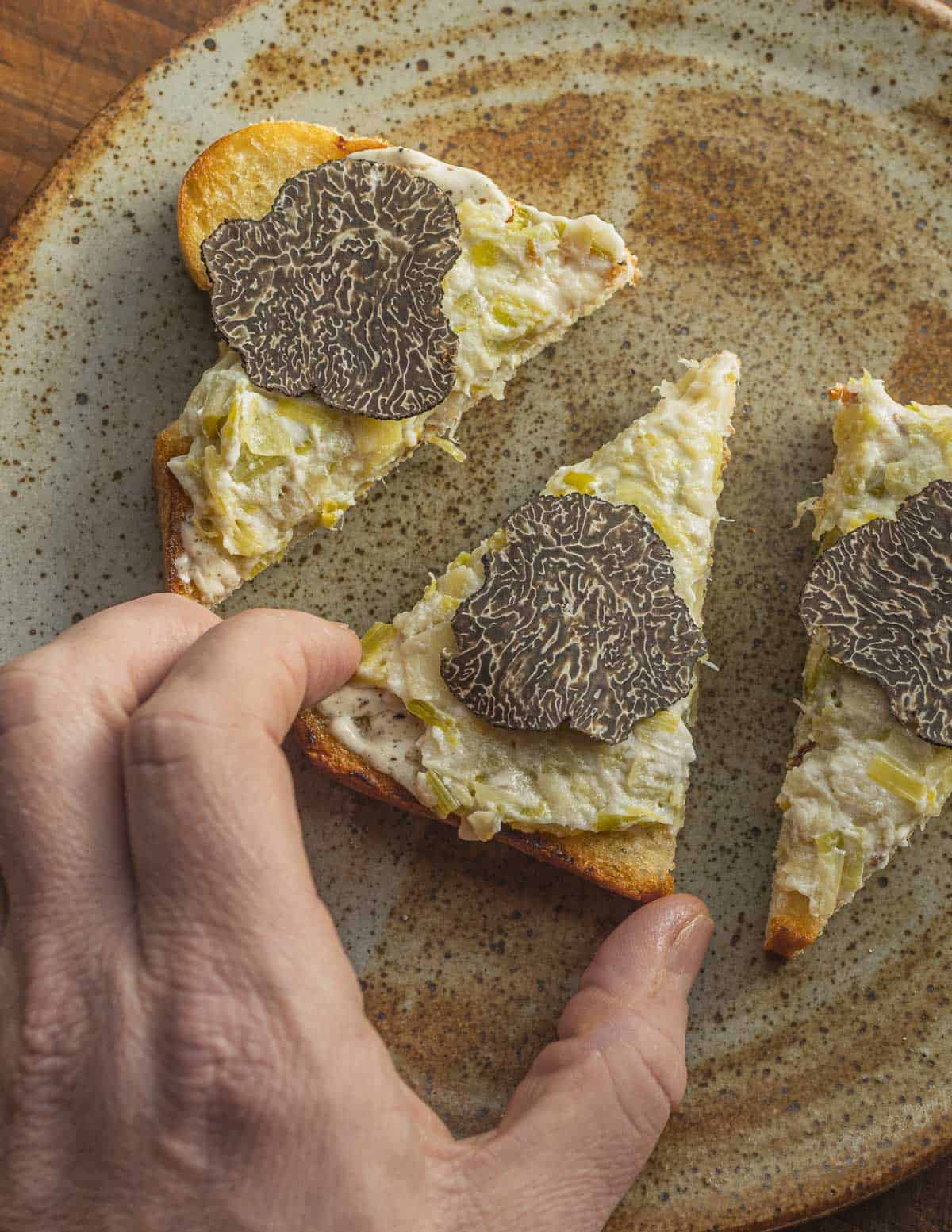
You can see a walkthrough of the recipe here.
Butter
Extra scrap or pieces can make a great homemade compound butter. I have a post on making your own here.
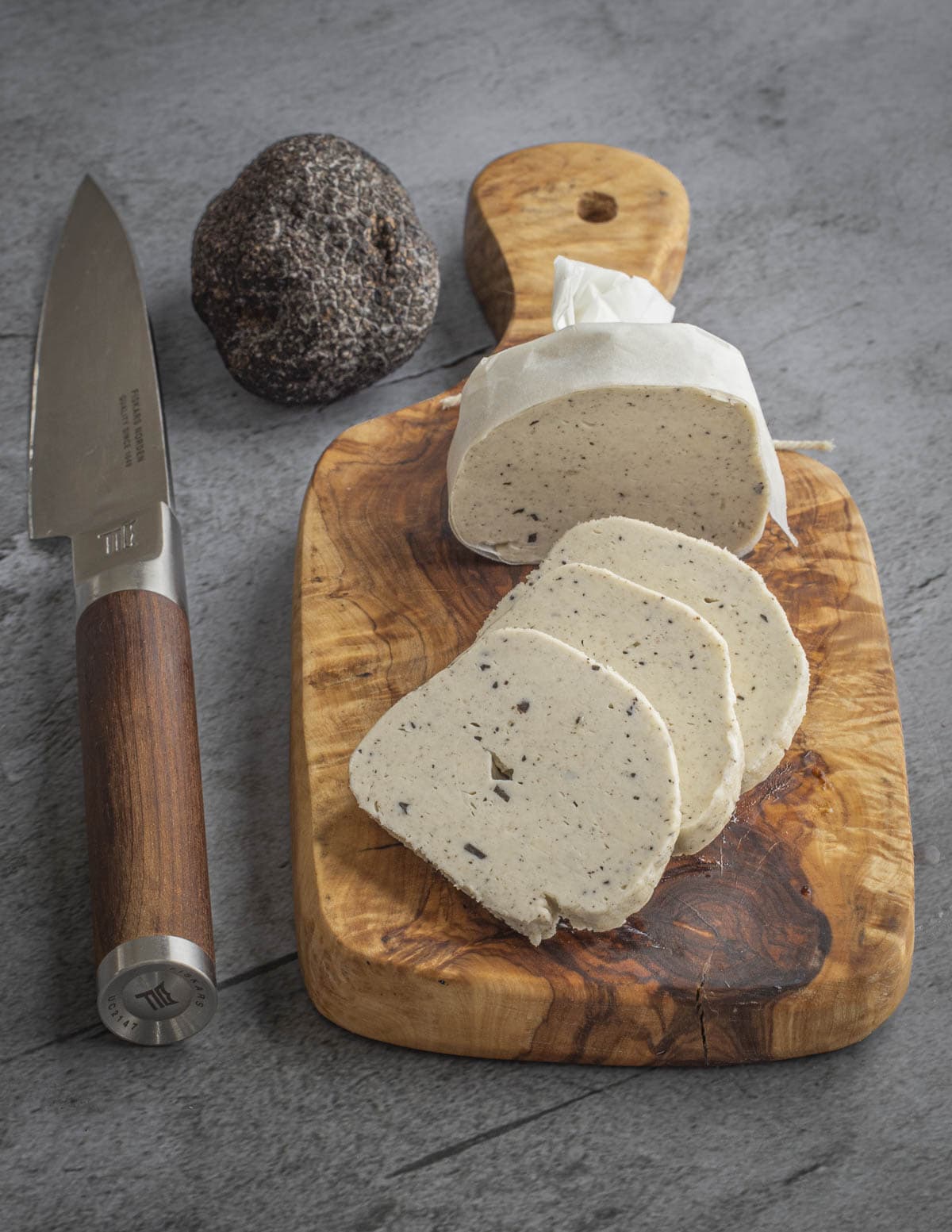
Oil
The Axe Body spray of condiments, commercial oils are very different from homemade truffle oil and typically made with synthetic truffle flavoring. I like to make a concentrated oil by simply covering fresh slices in grapeseed oil or olive oil with a pinch of salt. After a day or two of infusing eating the slices is an experience.

For more you can also peruse the archives for all truffle recipes on this site.
Related Posts
- Appalachian Truffles (Tuber canaliculatum)
- Pecan Truffles (Tuber lyonii)
- Blue Ridge Truffles (Imaia gigantea)

Andrea Olson
"The Axe Body spray of condiments..." !!! Hilarious!
Alan Bergo
It’s funny because it’s true 😂
Krista
Great article- thank you! How long do they last once you receive them? What’s the best method of storage?
CHRISTOPHER EARL MULLIN
Have you ever used any of the Oregon Truffles? I hope to do some foraging for them one day. I live in Oregon and in season the farmers markets do carry them, but I am unsure how to best use them. I mostly just microplane them onto soft scrambled eggs. I enjoy you videos and have read your book, and obviously read your blog. I particularly liked the discussion you and Hank Shaw had on his podcast. Anyway thanks.
Izzy
Wow! Very informative. I am hearing rumors of a species in North Carolina. Appalachian truffle?
Pecan truffles are on my bucket list. I had a fantasy about getting them in South Georgia then driving to the mountains and catching a rainbow trout out of the river. Built a fire on the river bank and cooked that fish with pecan truffles. Woke up hungry.
Alan Bergo
Hey Izzy, there’s a link to my post on Appalachian truffles in the related posts section. People were actually finding pecan truffles with dogs in Northern Wisconsin this past year.
Erica Jo
Excellent article with fantastic information! So inspired now to try the different truffle species to know the flavor experiences. Thank you for scoring your readers the discount! Heading there now to see what I can afford. lol.
Krista
Thank you! Looking forward to ordering some. About how long do they last once they arrive, and how do you advise storing them?
Alan Bergo
Hi Krista. You want to use them within a week. They’ll be at peak aroma when you get them so you want to use or preserve them quickly. They can be good for around a week, but it also depends on how long they’ve been out of the ground. They might last for two weeks but the aroma will have faded, I keep them in the fridge in a jar with eggs I open and air out every day. Or in a container with butter, or just wrapped in a dry paper towel in a zip loc.
Krista
Thank you!! I’m sorry I didn’t see your response at first and I re-asked you the same question in a new comment this morning. Please ignore!😁